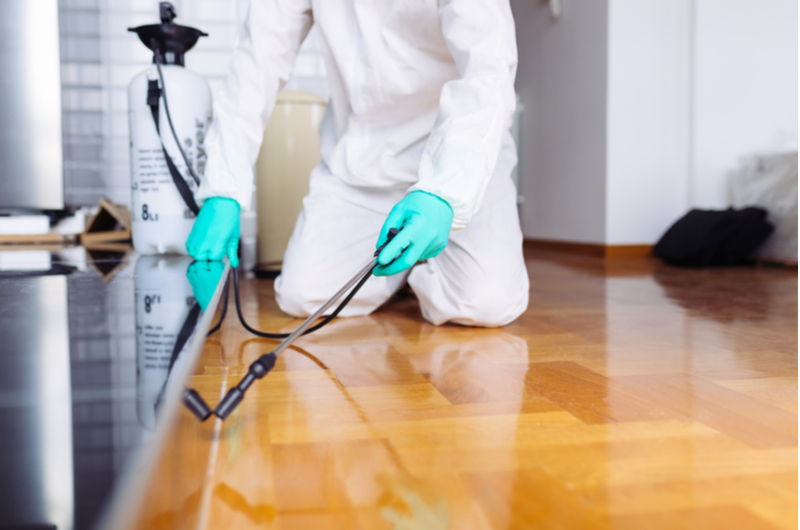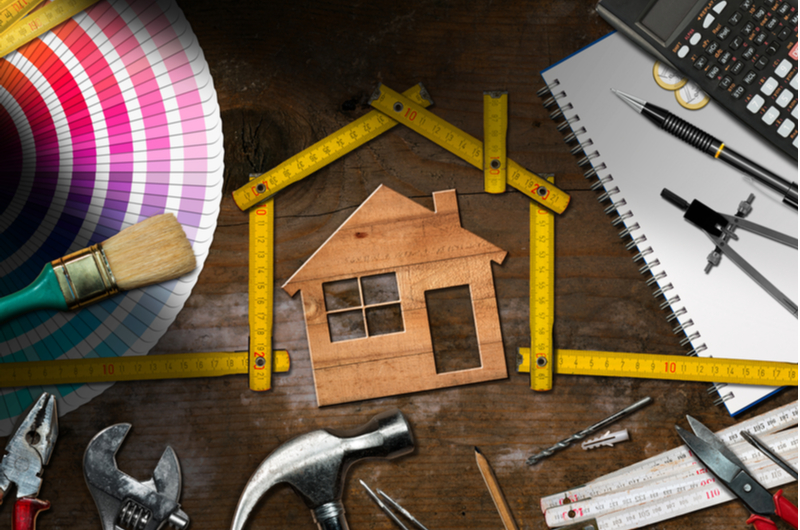Termite Removal and Extermination
There are several types of termites that can infest your home. Learn more about spotting termite damage and how exterminators can remove termites.
If you are a homeowner, you must be vigilant for pest infestations. Most pests only cause minor damage, but there are some infestations capable of causing major damage to your home. Termites are considered one of the worst pests because of the damage they cause to a home. Termites survive by consuming wood, which includes your walls, ceiling and floors. Because of their small size, termites are hard to spot. Most termites nest inside of your walls or floor, so you do not realize they are even present until they start causing damage. If left unchecked, termites can cause permanent structural damage to your house.
There are a few warning signs you may have a termite infestation. Even if you notice the damage, tracking down the nest is difficult. Removing the termites from your home is also challenging, requiring carefully applying chemicals to get rid of the termites. Even if you are comfortable with do-it-yourself projects, you are strongly encouraged to hire a professional exterminator to deal with a termite infestation.
Subterranean Termites
There are several different variants of termites, each which causes different damage. Subterranean termites live underground in the soil. The most destructive breeds of subterranean termites are located outside of the United States, but there are still some species that can do damage to a house. Because they primarily live in the ground, subterranean termites primarily live underneath your floor. Some signs you have subterranean termites include your floors swelling or buckling. A nest of termite also has a moldy or mildewy scent.
Since they are located in one spot, subterranean termites are easier to deal with. However, if they are spread throughout your house, it can be difficult to remove them. Depending on how much damage was done, you may need to replace your floorboards.
Drywood Termites
Drywood termite infestations are difficult to spot. Most drywood termites live in large network of tunnels, which they build inside of your walls. Because you cannot see the inside of your walls, you will not spot the termites until they cause serious damage. Most homeowners discover drywood termites when their walls begin to crack and break apart. Removing drywood termites is challenging because you have to open up your walls to spot them. Drywood termites also spread out further and create winding tunnels, so even if you notice damage, the actual nest may be in a different part of your home.
Some drywood termites also go after wooden furniture. These termites are easier to spot since you can see the furniture. Because it is a smaller area, it is much easier to locate and remove the nest. The damage to furniture is typically more severe and will result in the furniture breaking apart if the infestation is not caught early.
Dampwood Termites
Dampwood termites are the largest breed of termites in the United States. They are the least common type of termite, but can cause the most significant damage. Dampwood termites are drawn towards moisture. In nature, they are mostly found in tree stumps and fallen logs. Most dampwood termites remain outside, but if the interior of your home suffers from water damage, they may decide to move in. Dampwood termites hollow inside of support beams to make their home. Despite their large size, dampwood termites are difficult to spot because they cover up their tunnels. It is also easy to mistake the damage as being caused by the water. Because wood is weaker when exposed to moisture, dampwood termites can quickly destroy the foundation of your home, often requiring structural supports to be replaced after the infestation is dealt with.
Warning Signs
There are a few different warning signs associated with termites. The first is portions of your floor appearing blistered, a common sign of subterranean termites. Another sign of termites is hallowed out grooves along your walls or floor. Most termites leave a honeycomb shape in the hallowed-out sections. With larger nests, you may be able to spot discarded termite wings along the base of your windows or doorways. A nest of termites may also be audible. Termites make a clicking sound when they communicate with one another. A sign of dampwood termites is peeling paint, which is a result of an increase of moisture behind the wall, which makes the paint peel or bubble.
Removing Termites
Termites are difficult to remove because they burrow inside of your walls and ceilings. The most effective way to get rid of termites is chemicals. Termite exterminators primarily use two types of chemicals, fipronil and hexaflumuron. With smaller nests, exterminators can also spray boric acid through cracks or crevices in your floors or walls to get rid of termites.
In most situations, exterminators must drill holes into your walls or floor to reach the termite nest. This may sound simple, but exterminators carefully select where to drill, as they do not want to cause additional structural damage based on how far the termites have spread.
On average, termite treatment costs between $3 to $15 per square foot. Most treatments end up costing between $300 to $800. The cost is largely dependent on the size of the infestation and how long the termites were in your home.
Terminix
Terminix is available in most states, except for Alaska, Montana and North Dakota. The company was founded by Frank Lyons, who created the first termiticide treatment in the 1930s. Terminix is a professional company with detailed termite removal plans. They help you assess the types of termites as well as where the nest is located. They have multiple elimination methods, based on where the nest is located. The company also arranges follow-up appointments to make sure the nest was removed. They also advise on what changes to make to avoid future infestations.
Orkin
In addition to pest removal, Orkin also solves moisture and insultation issues. Orkin uses high-tech methods to locate termites, including infrared thermometers and moisture meters. They use specialized foam treatment to reach termite nests deep within your walls, which eliminates the need to deconstruct portions of your home to reach the nest. The company also offers a 30-day money back guarantee if you continue to have termite issues.
Truly Nolen
Truly Nolen started out as a smaller, family run company, but has become a large pest control service. The company prides itself on comprehensive inspections, using a variety of tools and techniques to thoroughly explore every inch of your house, including between the walls and underneath your floorboards. They also examine the outside of your house to try and locate where the termites originally came in from. Part of removing the termites also involves setting traps or sealing up cracks in your foundation, keeping the termites from returning.



